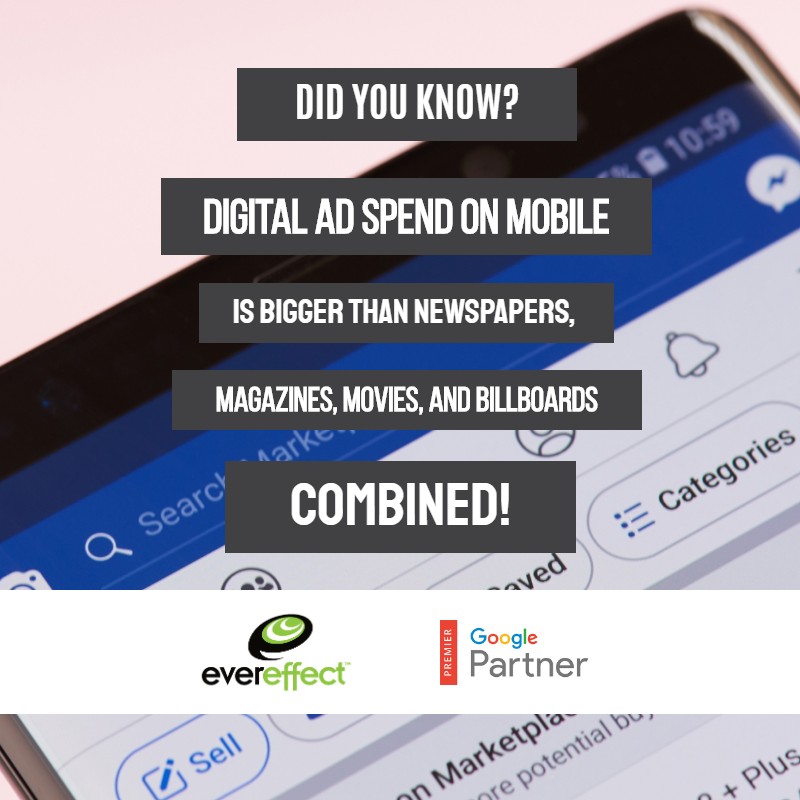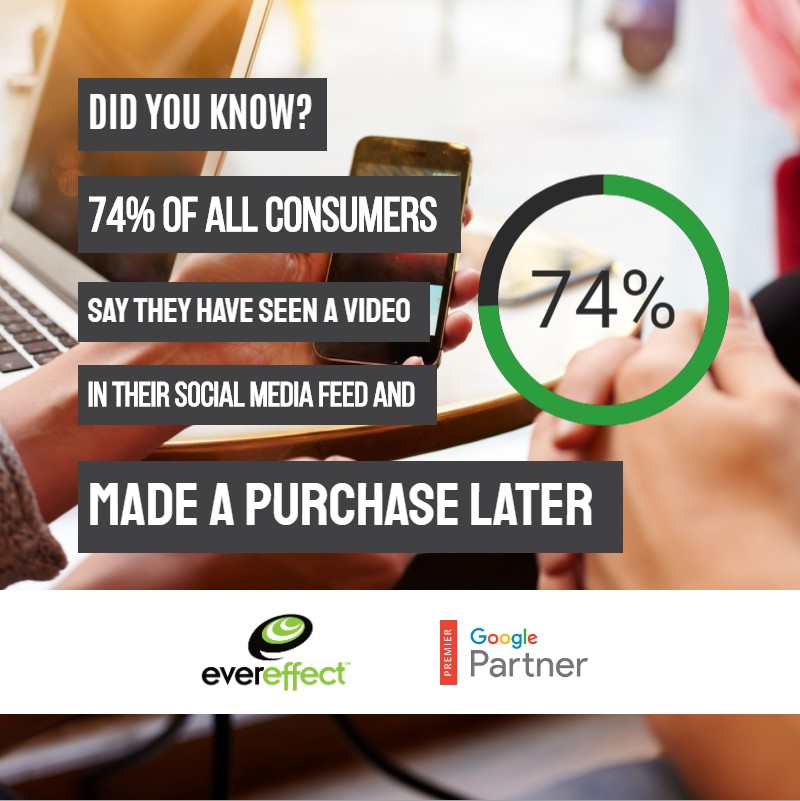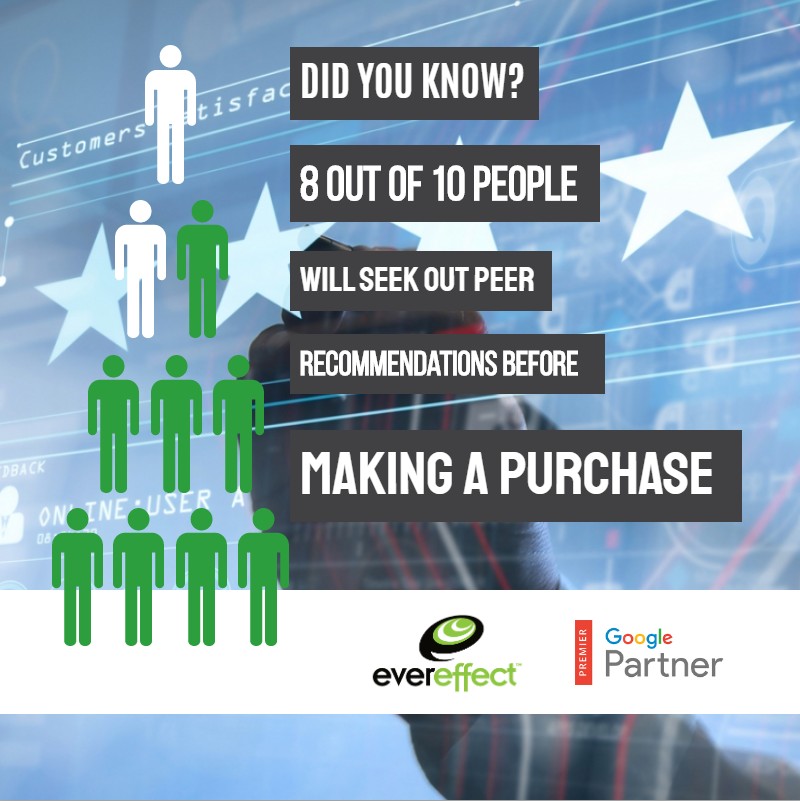The 4-Legged Barstool of Online Buying
What makes people finally take the leap and buy something? In today’s tech-fueled marketplace, there are four powerful factors that influence consumers and encourage them to make buying decisions:
- Mobile: It’s a dominant force, with 79% of all internet minutes now accessed via a mobile device. That’s up from 75% and 68% in the previous two years.
- Video: More than 75% of consumers now watch online video weekly, and half of them watch more than two full hours per week of streaming video.
- Reviews: Authentic feedback from a trusted source has a greater impact on consumer behavior at the tipping point of a buying decision than any other form of marketing.
- Data: By leveraging the power of data and analytics, sellers can provide more meaningful content and problem-solve for customers as part of the selling process.
Together, these factors come together to create the 4-legged buying barstool. Let’s take a closer look at each leg, so you can see how they support a solid digital marketing plan.
Mobile Devices and the Customer Journey
For most consumers, researching a purchase now starts on mobile device. From the first Google search to the final online order, buyers rely on their mobile devices to conduct the entire process.

What’s more, the mobile purchasing cycle happens fast. A whopping 78% of all buys are made on mobile within one day of the initial research. That means if a company isn’t visible in search immediately, the sale could be lost forever.
The good news about the speed of mobile buying: If a mobile user doesn’t buy something on day one, they’re quite likely to make an in-person visit to a store on day two. These shoppers use their smartphones as hunting tools, narrowing the search to just a couple of targets.
For marketers, this is a crucial point in the customer journey. It’s an opportunity to provide helpful information that shows you can end their search immediately with the perfect solution.
Some things to know about reaching people on mobile:
- In the last quarter of 2018, for the first time mobile search surpassed desktop search in total share of search.
- After researching via a mobile device, 67% of all shoppers still head to a store to make a purchase.
- Overall digital ad spending in the U.S. is projected to grow 19% to $129.34 billion this year, which is 54.2% of all U.S. ad spending. Mobile accounts for more than two-thirds of this, at $87.06 billion.
- This means mobile advertising is bigger than newspapers, magazines, movies and billboards combined. It now dominates ad spending.
The Importance of Branded Online Video
Three-fourths of the people you see every day regularly watch online videos. In fact, 60% of people say they now prefer to watch online videos rather than television.

The heaviest watchers of online videos are Millennial men, most of whom consistently view two or more hours of online videos every week.
- 58% of men and 44% of women watch 2+ hours of online video per week.
- 68% of Millennials watch at least 2+ hours of online video per week.
There’s a strong link between all this video-watching and the buying behavior of today’s consumer: 74% of all consumers say they have seen a video in their social media feed and made a purchase later and 46% recall making a purchase directly after watching a branded video on social media.
If you’re considering adding video production to your digital marketing strategy, here are some things to keep in mind:
- People welcome branded videos: 81% of consumers currently interact with brands on social media and 43% have done so through watching a branded video.
- 79% of people say viewing a video is the easiest way to get to know a brand online.
- The average person spends about six hours per day on their smartphone/tablet, an increase of 11 minutes since last year, and social video time is about 45 minutes of that.
- 60% of social video watchers expect to watch even more social video next year.
Wondering where all this social video watching is happening? Well, about half of all social video viewing happens on YouTube. Another 36% takes place on Facebook, and the rest is divided among Snapchat, Twitter and Instagram.
Reviews Equal Brand Trust
It probably wouldn’t surprise you to learn that the top three categories of people who influence our decisions are our friends (59%), family (47%) and former acquaintances (39%). But you might be surprised at how willing we are to consider the opinions of total strangers.

Eight in 10 people will seek out peer recommendations before making a purchase, but a “peer” doesn’t have to be someone they actually know. The modern definition of a peer could be anyone who:
- Speaks from firsthand experience, like an expert in the field
- Has special status with a respectable company, like Amazon’s “verified purchasers”
- Has visible proof of using the product, like an unboxing video
- Appears to be similar to the viewer in terms of age, life stage and/or lifestyle choices
As long as the review comes from an objective point of view and speaks in an honest, authentic-sounding voice, people are inclined to trust it.
Here’s something else that’s important to keep in mind about reviews: All news is generally good news when it comes to reviews. Even negative reviews can work in a product’s favor, inspiring people to pay attention, talk more about the product online and at least think about making a purchase.
User Data: Stop Chasing & Start Predicting
Finally, let’s look at the last leg in our 4-legged barstool: data. Search engine optimization companies have never had so much easily-available data about their ads and their consumers. When planning your next campaign, remember to capture the valuable information offered up by Google, Facebook, YouTube and all the rest of your social media marketing strategy.
Most marketers could step up their data game by doing the following:
- Use data for personalization. Today’s consumers expect a highly-customized experience. They know you’re going to gather personal data about them and in exchange they want a fast, frictionless experience guided by that data. The more personal you can be, the more loyal they’ll feel.
- Stop chasing. Start predicting. Use the predictive data signals that are now being generated by machine learning and automation. For example, Google’s ad system now makes recommendations based on its massive database of information, so you can reach new people who are likely to be interested in your information, not just more of the same old, same old.
- Think omnichannel. Don’t isolate the viewing of your marketing messages within channel silos such as print, video, social and the rest. Combine the data you receive from the omnichannel – all channels working together in harmony – and look at the broader picture your data builds. This is the key to developing a deeper connection with your customers.
So, how does your 4-legged barstool look? Is it well-balanced or wobbly? EverEffect is here to help.
GET TO KNOW EVEREFFECT
As a Google Partner, EverEffect has exclusive access to Google expertise – a distinction given to only a select number of Google Partners worldwide. Plus, we can help you with world-class video production, web design, and much more.
Tell us your story via our online contact form or give us a call at 888-506-2183 for a face-to-face.

